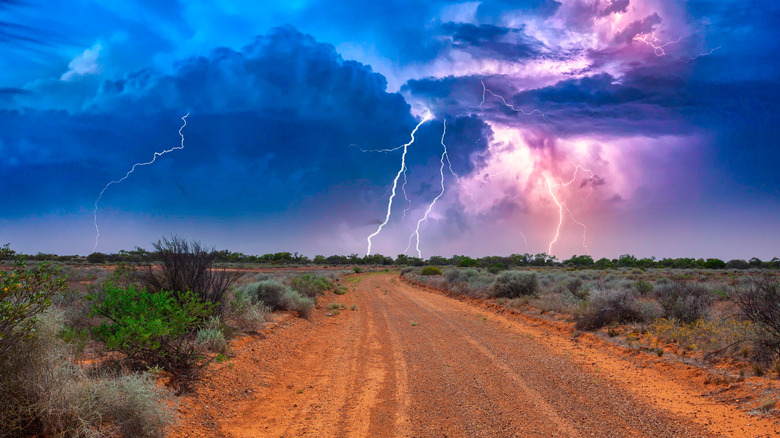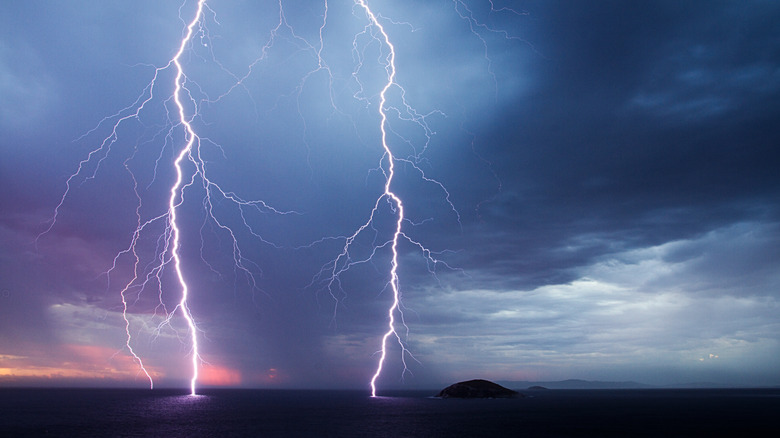Can Thunder Really Tell You How Close The Lightning Is?
We've all been there at one time or another — enjoying a light, breezy outdoor activity, like a hike, picnic, bike ride, or morning walk. The sky appears cloudless at first; the weather is temperate, even favorable. Yet, just as the day seems bright, the unmistakable sound of thunder rolls in the background, indicating an encroaching storm.
Common sense tells us to pack up our belongings in these situations because when thunder rolls — lightning and storm clouds inevitably follow. If there is a good indicator of lightning on the way, that indicator is definitely thunder. But, is thunder only a warning of a looming storm, or does it serve an even better weather purpose, one that is fantastically accurate and precise? Surprisingly, the truth lies in the latter. Mental Floss reports that doing a little math between thunder and lightning strikes can give you a pretty good estimate as to when a storm will arrive at your precise location.
Use the 'Flash to Bang' method
According to Mental Floss, there's a scientific method for using thunder to determine just how far away lightning is from your location. The method, sometimes called "Flash to Bang," is a precise mathematical equation that makes use of the speeds of light and sound, placing them against each other to calculate your distance from a lightning strike (via Live Science).
To simplify the process, one must first take the speed of sound and reduce it to one mile for every five seconds that passes. Then we look at the speed of light, which barrels in a little faster at 186,282.397 miles per second. Since thunder is actually a reaction to lightning, not the other way around, this is where the idea of flash to bang comes into play.
In order to measure your proximity to a storm, seek the flash of lightning in the sky and then take a moment to count the number of seconds it takes for thunder to roll. Next, you just take that number and divide it by five, which should equal the number of miles you're standing away from a storm. A simpler method, and likely the preferred one for most, is to pack up your stuff as quickly as you can and run before you see any lightning at all.

